- News
- Reviews
- Bikes
- Components
- Bar tape & grips
- Bottom brackets
- Brake & gear cables
- Brake & STI levers
- Brake pads & spares
- Brakes
- Cassettes & freewheels
- Chains
- Chainsets & chainrings
- Derailleurs - front
- Derailleurs - rear
- Forks
- Gear levers & shifters
- Groupsets
- Handlebars & extensions
- Headsets
- Hubs
- Inner tubes
- Pedals
- Quick releases & skewers
- Saddles
- Seatposts
- Stems
- Wheels
- Tyres
- Tubeless valves
- Accessories
- Accessories - misc
- Computer mounts
- Bags
- Bar ends
- Bike bags & cases
- Bottle cages
- Bottles
- Cameras
- Car racks
- Child seats
- Computers
- Glasses
- GPS units
- Helmets
- Lights - front
- Lights - rear
- Lights - sets
- Locks
- Mirrors
- Mudguards
- Racks
- Pumps & CO2 inflators
- Puncture kits
- Reflectives
- Smart watches
- Stands and racks
- Trailers
- Clothing
- Health, fitness and nutrition
- Tools and workshop
- Miscellaneous
- Buyers Guides
- Features
- Forum
- Recommends
- Podcast
feature
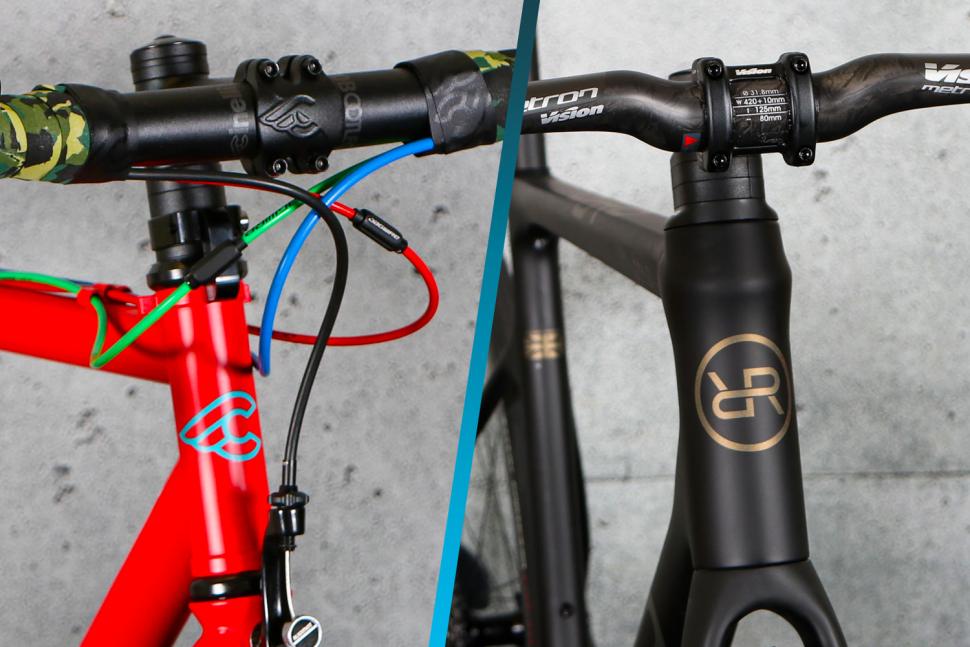 Cable Routing Jan 2024
Cable Routing Jan 2024Has the move to full internal cable routing on road bikes been worth it? We asked some experts to weigh in on cycling's cable-tidy revolution
Bikes with internal cable routing looks super slick and cleaner than the most minimalist of whistles. But beyond the aesthetics has the move to full internal cable routing really been worth all the extra hassle we're told it comes with? We talked to industry experts, from aerodynamicists to framebuilders and WorldTour mechanics, to find out…
The cycling establishment
Miles Hubbard is road product manager at biking behemoths Specialized
road.cc: Do you have data showing the drag-reducing claims of internal cable routing?
MH: We’ve studied the effect of exposed cables on drag since the inception of our Win Tunnel [Specialized's own purpose-built wind tunnel]. We don’t just integrate cables for the clean aesthetics. It does look great, but it also makes a difference for aerodynamics. Over 40km, hiding a pair of brake lines saves around six seconds at 45kph.
How do you perceive how easy, or not, it is for the home mechanic to work on internal routing?
We work on our bikes at home, too. We get it! We strive to make our bikes with integrated cables as easy to work on as we can, but it’s no secret that integrated cables require extra effort to maintain over time and that’s not a worthwhile feature for all riders. That’s why we make plenty of bikes with standard cable routing, too.
Any advice for road.cc readers (and the staff) regarding internal cable-routing jobs?
When it comes to bikes that are integrated, here are few helpful thoughts to bear in mind…
- For two-piece integrated cockpits, it’s useful to hide the brake hoses under the stem, not through the stem. The Tarmac SL7 stem is a good example of a system that neatly hides the cables while keeping simple fit changes like stem swaps easy. You won’t have to cut hydraulic lines and re-bleed brakes for most stem swaps.
- When it comes to travelling with an integrated cockpit, bikes that have a small amount of brake line hidden beneath the stem make it easier to remove the cockpit and pack in most travel cases. The SL7 stem and Roval Rapide cockpit are good examples of integrated bike designs that make travelling with an integrated bike easier.
With the WorldTour starting in Australia – the Tour Down Under – when you introduce a new bike to a team, do you show them how to maintain it? This is especially true of internal cable routing
As long-term partners we have great relationships with our teams [Soudal Quick-Step and Bora-Hansgrohe], and work closely with the mechanics and athletes when new bikes and equipment are introduced. Our bikes have had integrated cables for several years now, so for our teams and pro mechanics it’s about as simple as changing a tyre. They are experts.
The race mechanic
Klas Johansson is an experienced mechanic at the top level. His current team is Norwegian UCI ProTeam Uno-X Mobility, who harbour ambitions to make the WorldTour, an experience Johansson’s already enjoyed with the likes of MTN-Qhubeka, Israel Start-Up Nation and Lotto-Soudal
What’s your experience of internal cable routing?
KJ: Currently, our bikes are from DARE, which is a Taiwanese bike company, but I’ve worked with so many other bike brands including BMC, Ridley and Factor. They were okay to work with but DARE’s the easiest – maybe a round fork helps as the others were all with square or similar forks – albeit they’re all time consuming. Then again, us race mechanics are dealing with just one brand of bike. I can’t imagine how tough it must be if you’re a bike shop mechanic and one minute you’re working on a Canyon and the next a Cervélo. I imagine the customer’s a little surprised when they get the bill as these things take time.
At a Grand Tour is it common to have cable routing issues?
No. In fact it’s less likely than any race because so much preparation work goes into a race like the Tor de France or Giro d’Italia. If a bike had a shitty headset or similar, you’d discover and sort the problem at the service course. Then again, if you have to change the headset, say, at the Tour, it’s easy. You might be able to do it in the truck, with decent light and a nice temperature. That’s not the same at a race like Paris-Nice where it’s often raining, windy and you’re stuck outside. You also have rest days for repair jobs and more mechanics.
So, you don’t awake in a sweat dreaming of a return to external cable routing?
No. Anyway, the industry’s decided it’s not going to happen. And this is now part of what we do. You learn to work with the specific frame, the specific headset, the specific fork… and work out little tricks to speed up the process. Still, a full internal cable routing change can take an hour and a half.
Any tips you can offer our readers?
Not tips but hope! With Uno-X Mobility we have CeramicSpeed as a sponsor. In November a representative of CeramicSpeed visited us and introduced what I feel could be a gamechanger. Let me explain… we often have to change headsets, which is always a pain when internally routing cables. CeramicSpeed’s created a headset, the SLT, that features a polymer plastic base and stainless-steel balls that are self-lubricating. Also, they are sealed superbly, making it almost impossible for water or contaminants to penetrate. If it works it’ll be revolutionary. And I’m sure it will as they’re also using it in the rear suspension of mountain bikes, which deals with a load of shit. I’m sure other companies will follow their lead.
Marginal gains: the aero expert
Dr Xavier Disley heads up Droitwich-based aero aficionados AeroCoach. What Disley doesn’t know about cutting drag isn’t worth knowing. We simply asked Disley if he’d looked into the aerodynamic benefits (or not) of internal over external cabling…
“We’ve done stuff in the tunnel and on the track around cables, but it’s difficult to get rid of them on a bike that doesn’t have the capacity to remove things entirely, so we can use some of that tidying data along with calculations.
“CdA is the drag value we’re looking to establish for a cable. As long as the cable isn’t doing something exciting like acting as a splitter over a shape behind it, then removing the cable will reduce the CdA of the bike.
“CdA is made up of two components – the Cd (drag coefficient) and the A (frontal area). Cd represents how aero the shape is, so an airfoil shape will have a lower Cd than a flat plate; the A is just the silhouette of the object. A cylinder will have a Cd of roughly 0.5; we can establish a baseline for the frontal area by taking something like a 5mm brake outer, multiplied by a typical exposed length that is dead on to the airflow (around 130mm for handlebar to front rim brake for example).
“That gives us a CdA for an exposed 130mm brake cable of 0.000325m^2. At 45kph this is equivalent to around 0.4 watts. If you have four of these cable sets at the front of the bike, then you’re looking at around 1.6 watts in total.
“When we’ve tested it on the track or in the tunnel, we’ve never seen more than a two-watt saving on a higher-end bike and sometimes none at all, which matches up with the calculation and also margin for error. At a lower speed – say 30kph – this 1.6 watts at 45kph is reduced to around 0.5 watts, so not a lot. But any advantage is worth having, of course."
A bike brand going against the grain
Icelandic brand Lauf is known for its gravel bikes. But Reykjavik’s finest launched its first road bike, the Úthald, at the end of last year, promising “aero where it makes sense”. That meant bucking the trend for internal cable routing, stating that “fully internal routing is mostly an aesthetics thing, best served to cyclists that find it difficult looking at brake hoses entering bike frames”. Here’s Lauf CEO Benedikt Skulason to explain why…
What do you see as the main benefits of external over internal cabling?
BS: We wanted to ‘optimise’ Úthald to make you faster. That clearly meant prioritising the ease of fit-changes, travelling, servicing and reliability. We prioritised that over the less-than-a-single watt of potential savings of fully hiding a pair of brake hoses from bar to frame/fork.
Have you seen any studies showing internal cable routing reduces drag compared to external?
Yes, but the ones we’ve seen are flawed; in other words, we don’t feel they resemble real road-bike riding. They don’t explicitly lie. But through presentation discreteness and skill, they do. They exaggerate the drag of external cables by all possible means, giving you a massively inflated number. That high number is left in your head as the key takeaway message and only then, to maintain credibility and to keep it “honest”, they subtly tell you that this number is in extreme circumstances. They look to avoid drawing attention to the fact that their inflated number is not just too high, it’s an order of magnitude too high!
How do companies inflate the drag?
In my opinion, there are five ways…
1) Testing done with four cables – in other words, non-wireless shifting – rather than two as seen on modern, wirelessly shifting high-end road bikes.
2) Neglect the required larger frontal area of a fully internally routed bike frame. (To house a larger upper headset bearing, the headtube needs to be bigger.)
3) Testing done without a rider on the bike. This is a simplification that exaggerates the drag of the cables. Including a rider would reduce the system’s overall ‘drag addition’ caused by an object upstream of the rider, as a given air molecule pulled along by the cables is likely going to hit the rider behind it at a lesser speed than what it otherwise would have done. Not including a rider in testing is incorrectly assuming that air pulled along by cables would never have gone on to affect the rider. A parallel example of this phenomenon that some might remember is testing that surprised many by showing that a beard added minimal drag. That beard would certainly have been shown to add significant drag if it had been tested without its owner resting behind it.
4) Testing is generally done at unrealistic speeds, without attempts to explain how (extremely!) misleading that is. Power required to sustain a certain speed against the wind grows to the power of three. So, if we assume someone claimed 1W saved at 45km/hr, then the savings become, at 35km/hr (TT-style, no-drafting) 0.47W, and at 25km/h (TT-style, no-drafting) 0.17W. That’s minimal to say the least.
5) It skews results further to focus on time-trial riding values where any aero benefits are greatly exaggerated compared to road riding where riders frequently draft other riders.
Are you concerned that cyclists will be put off the Uthald because of your cabling choice?
Yes, it would be hard to go against the stream like that on an all-in aero bike. However, the point with our Úthald was to make a road bike that would make you as fast as possible. Regardless of labels. Optimising a single ‘tool’ to gain speed (aero in this case) is another way of saying you're turning a blind eye to other things you might be sacrificing that’d eventually make you faster. On Úthald we do aero where we can, while also preserving other things we like.
The master framebuilder
The Campag Kid – aka Alan – is a cycling enthusiast and online sensation who’s built a cult following by restoring and building Campagnolo-equipped bikes
It’s a big subject, but what are your general thoughts on internal cable routing?
CK: Manufacturers have come up with dream bikes where you cannot see any cables. But the build time for these bikes is phenomenal. It’s why buying framesets is now rare. Imagine the rider who buys a frameset from Specialized, Colnago or Pinarello and has to work out how to manage hydraulic cables and the electrics.
Things have changed somewhat then!
Beyond the pale. At the beginning, frames were nearly bare as you didn’t have derailleur gears. When cables came in, they were bolted on [to the frame] with clips. This was around the 1940s and 1950s. Framebuilders then started to braze clips on, which changed the process of building a bike because you were thinking about cables from the start.
In the early to mid-1980s, bike companies started experimenting with putting the brake cables through the handlebars. This was the start of internal cabling. That was a real breakthrough, but the frames themselves stayed with external cabling. That was especially true of carbon bikes because manufacturers were understandably concerned with putting holes in their shiny carbon frames, this being before the detailed computer analysis that’s seen in today’s frame design. That changed well over a decade ago thanks to the likes of Colnago, albeit electronic gear shifting systems made things even more complicated.
> The Campag Kid on the road.cc Podcast
Wiring a frame with Shimano Di2 or Campagnolo EPS wiring is a nightmare. If you ever get a problem and you damage the charging port, for instance, you’ve got to rewire the bike, which means stripping it right down. Which means you’ve got to start fishing around inside with special cable kits.
Don’t get me wrong, I love EPS and Di2. The simplicity of just pushing a button. They’re worth the hassle, but they’re just not great if you’re not a mechanic. If you can’t afford to take it to a shop or there’s no shop in your area, you’re stuffed. Disc brakes and internal routing’s complicated the picture further.
Is this the end of the home mechanic?
I might not go that far, but framebuilders and the OEMs that build the bikes have a lot more things to think about, which simply aren’t on the radar of a home mechanic. Even simple stuff. For example, many people forget that when the OEMs internally route, they wrap the cables in sponge foam to prevent rattling inside. If the home mechanic works on their bike, they throw it away thinking it’s packaging… and are then surprised with the rattling noise that’s appeared on their next ride!
Any signs that cabling complexities might improve?
Well, it won’t be long before wireless works its way down the groupset ladder and the only cables you’ll have to worry about are the hydraulic ones. Mind you, it might not be long before bikes take a leaf out of the automobile industry and integrate brake-by-wire systems. I know Shimano have been messing around with patents for a similar system. Essentially, this is a brake-by-wire system that controls the brakes electronically. A position sensor monitors how far the driver has pushed the brake pedal, which then determines the amount of braking force requested. A control unit determines how much hydraulic pressure is required, and an electric pump is used to generate that pressure and stop the car. All of this happens in an instant.
So, what is the future?
If you think about it from a business and engineering perspective, the bike is edging closer to the car. Not in the way it’s utilised, of course, but the car business model is that they don’t want customers messing around with vehicles. They just want the customer to get in the car, drive it and then when it needs servicing, they come into the dealership and spend more money.
Cycling is going the same way. They don’t want Freds meddling in a shed. They want customers to be fully engaged, to take their Specialized or whatever back for a fluid change or the like. Internal cable routing’s a big driver of this change. Ultimately, it could even become a lease model. Use them, take them back, lease another.
What do you think about full internal cable routing on bikes? Let us know in the comments as always.
James is an experienced cycling writer whose palmares includes penning three books. His latest, Riding with the Rocketmen, charted his painful journey to the Etape du Tour finish line. Along the way, he learnt from Ineos in Andorra, got aero with Lawson Craddock in a wind-tunnel and cyclocrossed with Nick Craig. Despite that, he remained steadfastly moderate! He also edits the official Tour de France Guide, plus pens words for many other outlets, both in print and digital.
Latest Comments
- Prosper0 3 sec ago
Presumably this is a Chinese open mold frame, which you can buy direct for half the price.
- theJewishcyclist 10 min 34 sec ago
The increased drive friction causes power loss, so are effectively only one negative. I struggle to see how it would cause higher chain wear, as...
- Capt Sisko 38 min 14 sec ago
Just like folding helmets. Every couple of years someone thinks, that's a brilliant idea, I'll sell millions, I'll make a fortune. Erm, no.
- open_roads 1 hour 15 min ago
This is a great example of where public services can't be bothered to join up in order to drive the outcomes the public expect....
- eburtthebike 1 hour 56 min ago
He understands it: his social media site is called Truth Social or somesuch.
- chrisonabike 3 hours 19 min ago
Because they can....
- wtjs 3 hours 20 min ago
Of course the nutter being an Audi driver is just confirmation bias, just like the electric BMW driver killing a small child by SMASHING through...
- Secret_squirrel 3 hours 23 min ago
If the employee's of Komoot are mostly German employees on standard German contracts the new Italian owners are in for a bit of a shock....
- Robert Hardy 3 hours 31 min ago
Raising the maximum price limit a few years ago may be providing an avenue for abuse but I now see more and more parents delivering their children...
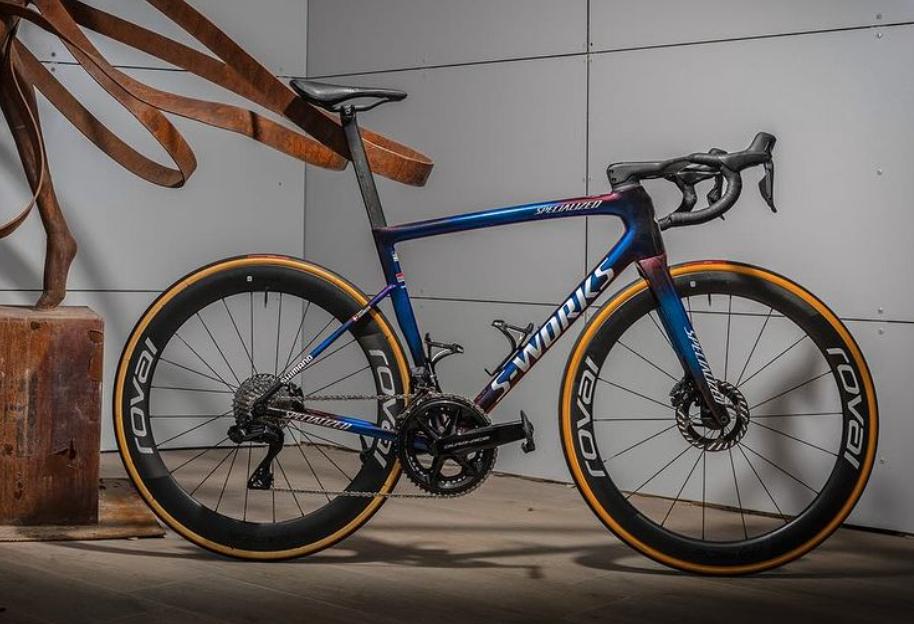
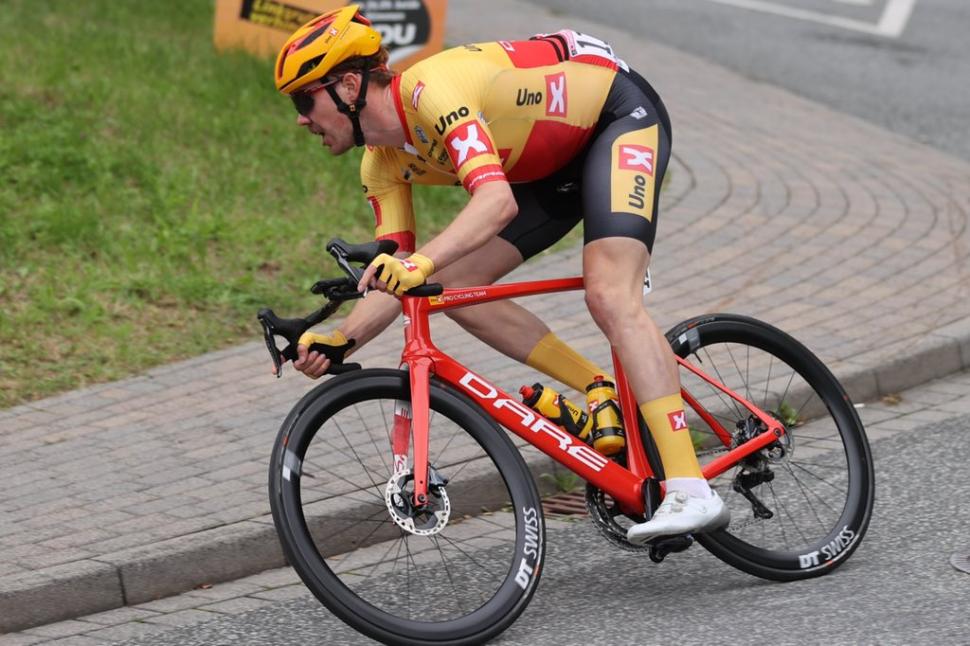
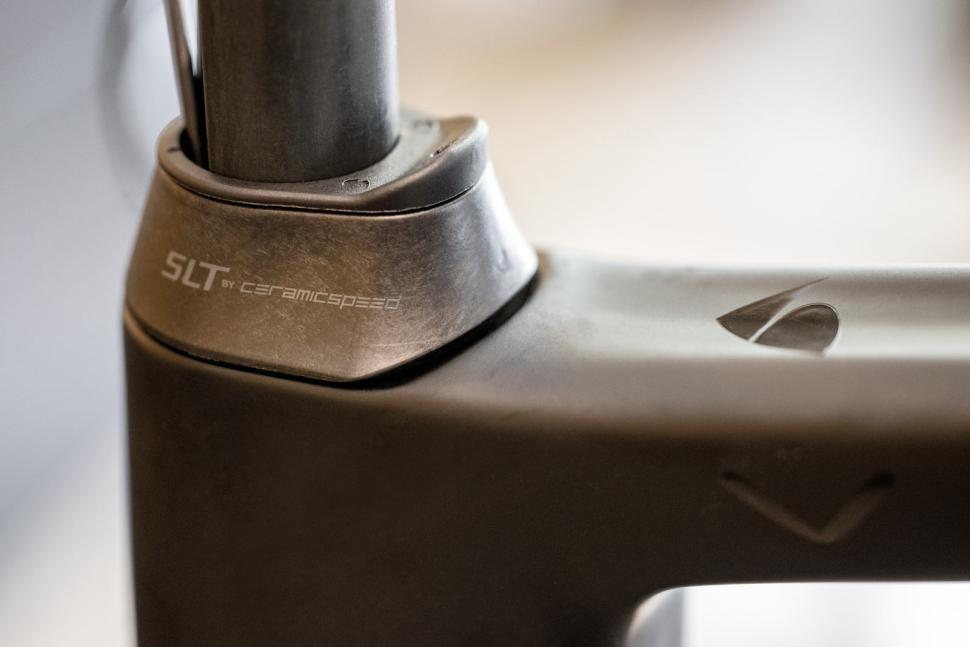
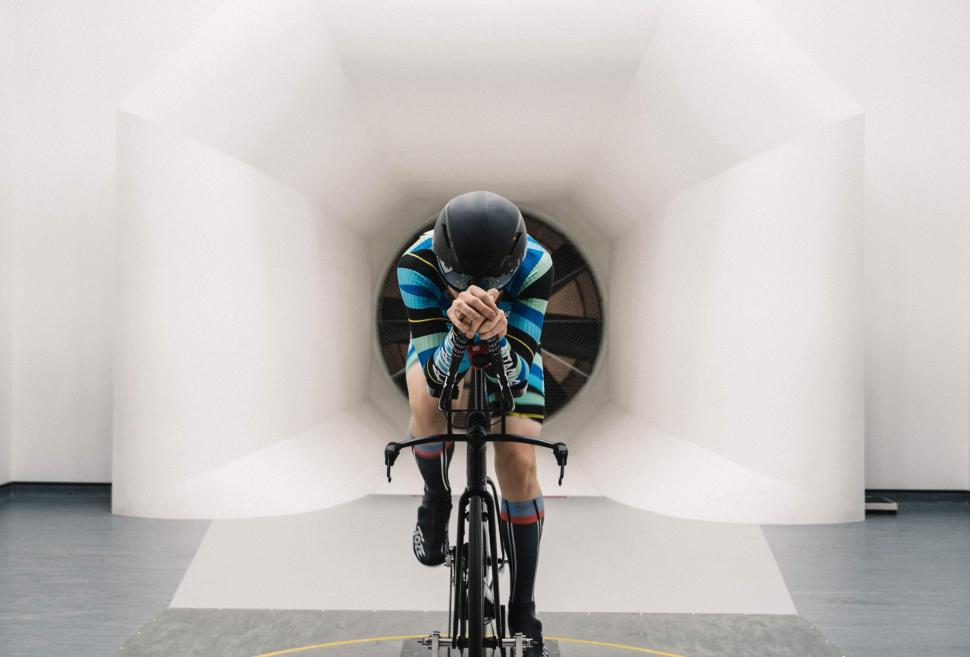
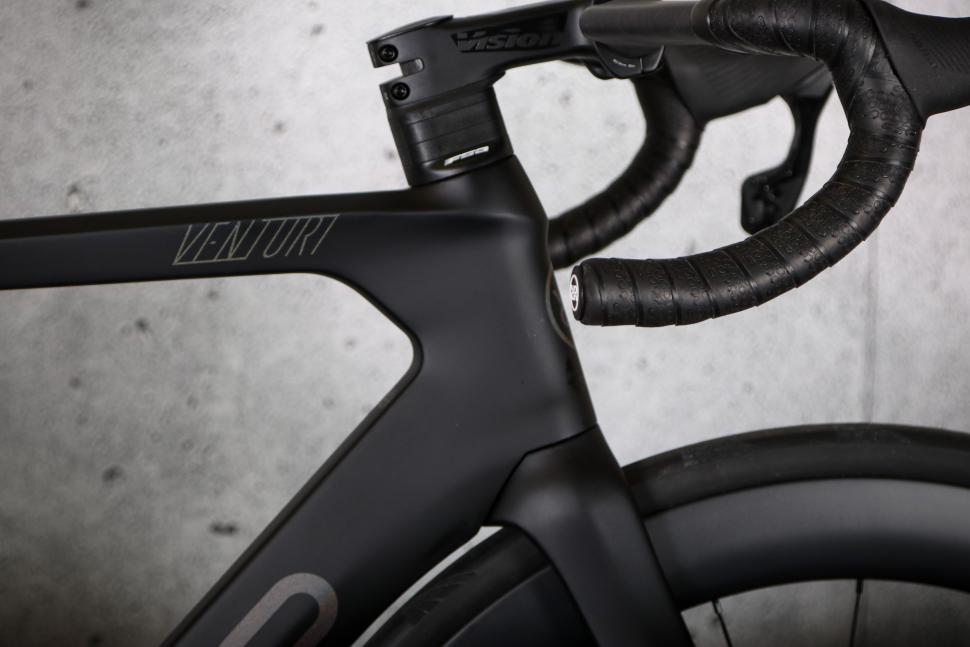
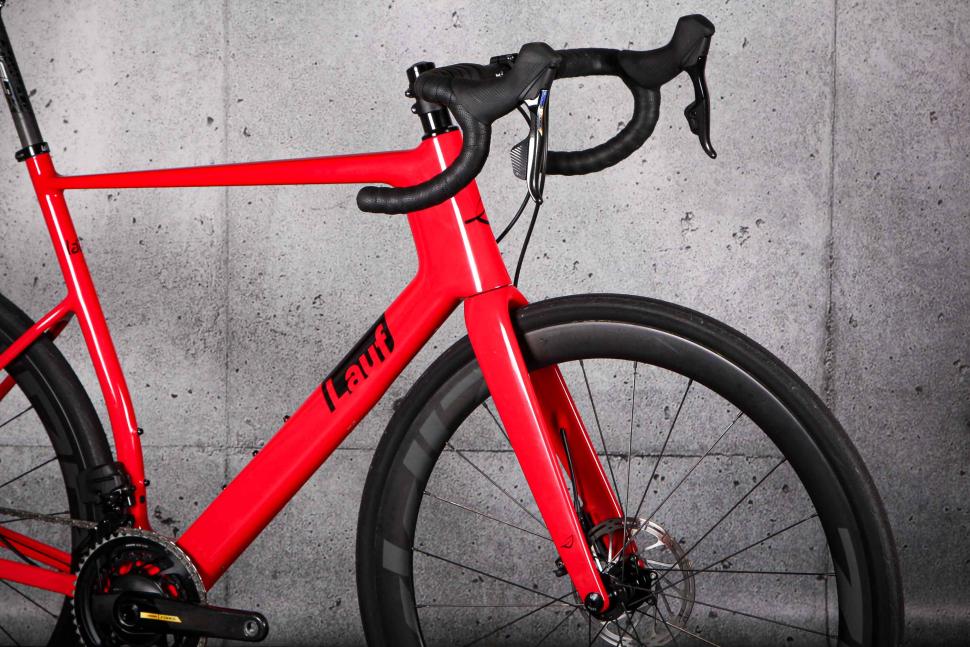
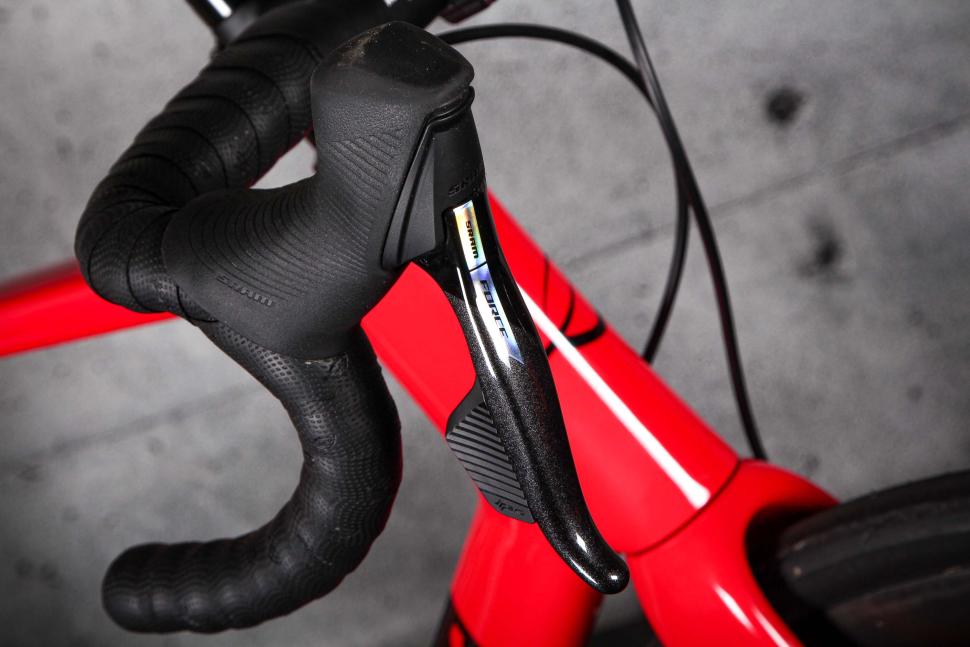
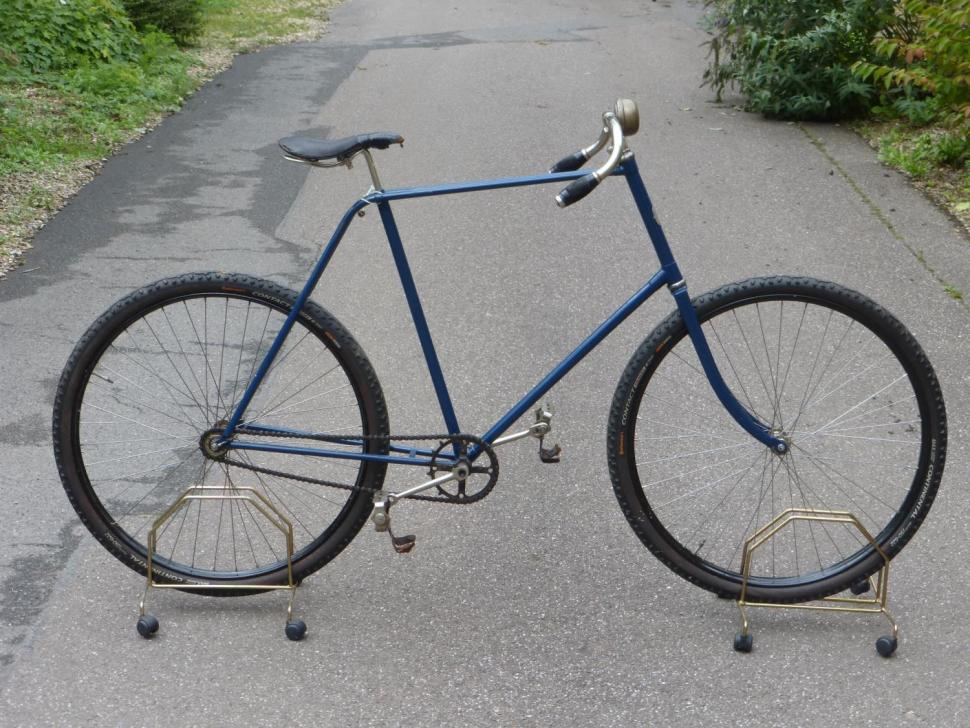
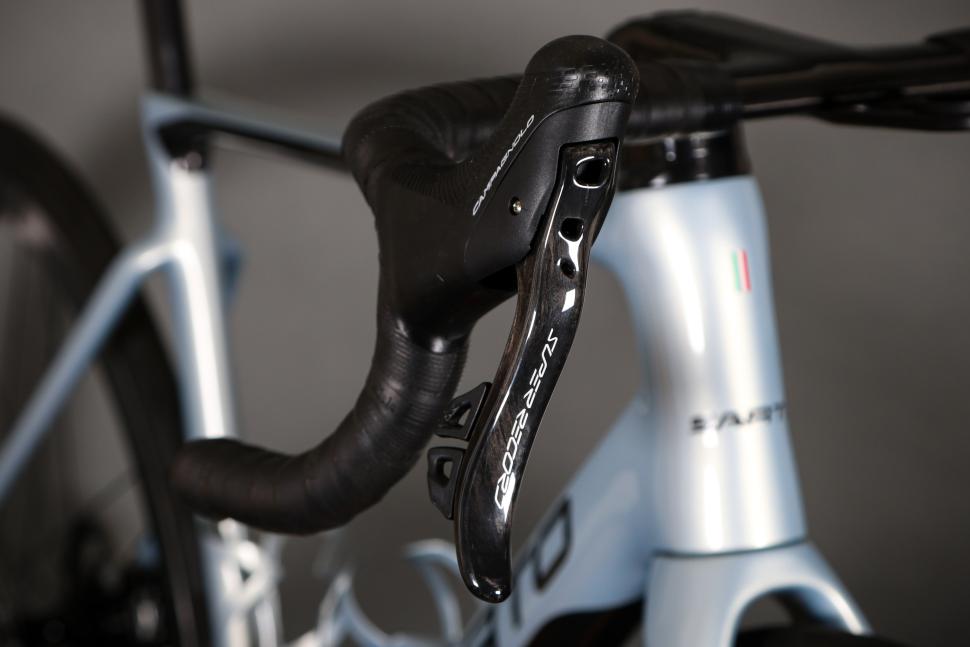
Add new comment
61 comments
For me, Ultimate Commuter has full run Nokon Rohloff and Hope braided, cable tied, so simple but mud magnets. Wouldn't have it any other way.
Other bikes, nokon brake and gear, in bits, and xtr brake and gear, so easy to change and service.
I like the look. It not really a hassle doing the build yourself just takes a little bit more time.. But Di2 and hydro hose are very little maintenance after so really no big deal to stress about. If not you can easily zip tie your cables outside the frame if you like.
I have never contemplated internal routing as it's obviously a real pain. I hadn't previously thought about the rattling, although it's obvious. I wonder how you get this foam on the new cable- is it just a self-adhesive foam wrap?
You can get that stuff from amazon. If I remember right, it's split along its length like a bit of pipe insulation from B&Q.
It's not a pain at all unless it's a new frameset without guides for the cables and housing. Once they're run once, pulling new housing through with a tandem cable is laughably easy and satisfying
Short answer - No. well not for me at least.
I'm an exception (here) in that I like the new stuff and have built up bikes with full internal hydro routing.
On t'other hand I recently built up a 90s frame for a son; my god it was easy!
https://youtu.be/C5ROd38_iYE?si=5UsXGLNWveLnplDh
I really enjoyed watching your video. It's nice to see an older bike being given a new lease of life. I hope your son has enjoyed riding it. Thanks for sharing.
"For example, many people forget that when the OEMs internally route, they wrap the cables in sponge foam to prevent rattling inside."
Does that mean my Trek District 4 was built improperly? It's nearly silent due to its belt drive, so one of its loudest sounds is the rattling of the cables routed through the down tube.
That's not ideal. Loose internal cables do rattle and it's maddening especially when you realise it's difficult to solve.
Building with a bit of foam on an internal cable is a faff but worth it.
Thanks. Maybe I'll try to shove a bit up through the bottom bracket. I resisted the temptation to spray Great Stuff™ through the bottle cage braze-ons.
Just squirt in a can of building foam filler.
Edit: just seen that you already had that idea and for some bizarre reason dismissed it.
Sometimes I give some consideration to Future Andy, who may need to replace those cables and not enjoy fighting a frame full of hardened spray foam.
future Andy wants a new bike, stop depriving him.
Aero gains... c'mon. I get that it's part of the 'aero look' though.
Into the upper down tube area and out by the BB is one thing (and I can take it or leave it personally, would prefer the full external and uncompromised tubes) but the full internal systems .. not on my own bikes, just a load of faff for no gain. I'm a Fred in a shed and it's why my last bike was from a UK custom builder not a carbon bike from a big brand.
Fashion and aesthetics sell though and that's why we have internal routing in the mainstream.
Doesn't this just slot in with Dave Brailsford and his marginal gains? Do lots of things that give insignificant advantage by themselves but make a significant difference when all combined together.
For pro racers that tiny aero/speed gain from full internal routing might be beneficial when combined with all the other factors, but for normal human beings it is literally just about what the bike looks like.
"Doesn't this just slot in with Dave Brailsford and his marginal gains? "
Agreed, it's about aesthetics for bike buyers, as are most things that have tech claims supporting them.
Part of marginal gains for pros, perhaps - if you can measure it it's there. I suppose what I'm getting at here is my general complaint that racing influences bike design too much, to the detriment of riders who don't race. Back to that point about aesthetics-driven purchases though.
I bought a new bike in November and opted for integrated bars (I had lots of custom options). Not once did I think about aero gains. I did think about how good it looked,. And still do. I also have a Cannondale that's getting quite old now. It has fully external cables but the way they are arranged is pretty neat.
If more people thought about repairability and upgradability, instead of newness and shininess, when purchasing consumer goods, then companies like Apple would've gone bust years ago. Instead they are trillion-dollar megacorporations. In lots of product categories the sensible long-term choice, that don't fill landfills with e-waste, have been phased out because consumers want the thinner, sleeker alternative. The successful corporations knows how to appeal to these instincts with products that maximise their profits (then they buy up the ones that don't.)
If tech companies cared more about repairability and upgradeability we would be about 5-10 years further back in the current phone tech. If you want to pick on a company as well, perhaps Apple isn't the best target. Their devices get support and updates for around 7 years usually. Batteries degrade and they will replace them for under £100 and then your phone will be fine again for a few more years. Personally I don't want shit software and hardware because companies have been forced to support a decade old device or we are still stuck on mini-usb because thats what most devices have/had.
There has to be a sensible balance and in high tech, that should probably be erring on the side of innovation over other concerns. Companies should be forced to offer repairs and security updates for a reasonable amount of time but thats about it.
People are the driving force behind these things as well as companies. When people stop buying a new phone that is 98% similar to the one they already have, things will change. When people buy a washing machine that costs £1000 instead of £220, things will change.
Our tumble drier was in the affected batch which had been known to catch fire when people never changed the lint traps. The drier cost us about £250 probably 7 years ago now. When the guy came out, our drier was broken but didn't have the recall issue so he wasn't allowed to touch it without us paying. He told me the parts to order to fix it and they cost about £30 total along with an hour of my time to fix it. If I had him come out to fix it, I would have forked out more than the original cost of the machine.
We have created a society where almost everyone can afford things that were the reserve of the wealthy 30 years ago. The flip side of that is that we engage in a huge amount of cheap conspicuous consumption which is the real killer.
Just look at the number of items that you have to throw in the bin because the manufacturer wanted to save 3p on packaging or because they wanted a really shiny wrapper for it.
"Over 40km, hiding a pair of brake lines saves around six seconds at 45kph." Is that with your jersey zipped up all the way or pulled down a few inches to let some air in?
I hope that 40km is a 15% downhill the whole way as that's the only way I'm gonna go 45kph for 40km
45kph is about 28mph so it is a good clubman speed for a 25m tt, not an unreasonable scenario, on a road bike it would probably need to be a 1st or 2nd cat rider in a breakaway to notice a difference.
In a TT most riders capable of holding that speed would no doubt use a TT bike where you would expect internal cables, aero profiling etc. on a standard bike, in real world racing it's not really going to come into play that often. A breakaway seldom escapes and usually they are let up the road and 6 seconds @ 45kph isn't going to hold off the peloton.
Most sprints are over 400-500 metres from lead outs so it's negligible. And in tbe climbs it's worth nothing at all.
one of the best bikes I ever owned for all round performance was a Focus Izalco with external cables. It was a joy to work on and maintain. Light as a feather and still kept pace on the flat very well with much more aero shaped bikes. Shame i sold it. Especially for a Giant TCR which was a total pain to work on.
That's fair enough, but when I'm going to the shop to pick up some reduced price Quality Street after Xmas, then those extra seconds are going to count.
only when you just beat someone to the last box (or get beaten to the last box) all other times, not so much.
Don't forget that when he gets home he has twice as many seconds head start over the rest of the family competing for the best ones!
Full internal routing can make home maintainence tricky and full external routing can look untidy. My preferred setup asthetically is aero brake levers with the rear through the top tube and dt shifters that don't need cable outers except from the cs stop to the rd, but everyone will have their own priorities.
The old skip-tooth pathracer is brilliant!
Full external routing can look neat enough if done well (edit, I think you mean full external outers - yes that's tricky and I agree about the exposed inners along the DT, classic road bike routing). Back in the day Yeti and other MTB brands made a visual feature of the cable routes. All options have a creative and pleasingly efficient solution, even internal routing.
If external cables run really parallel to tubes the dissappear visually. That's about as tidy as it can get while still being serviceable by "a Fred in a shed".
Pages